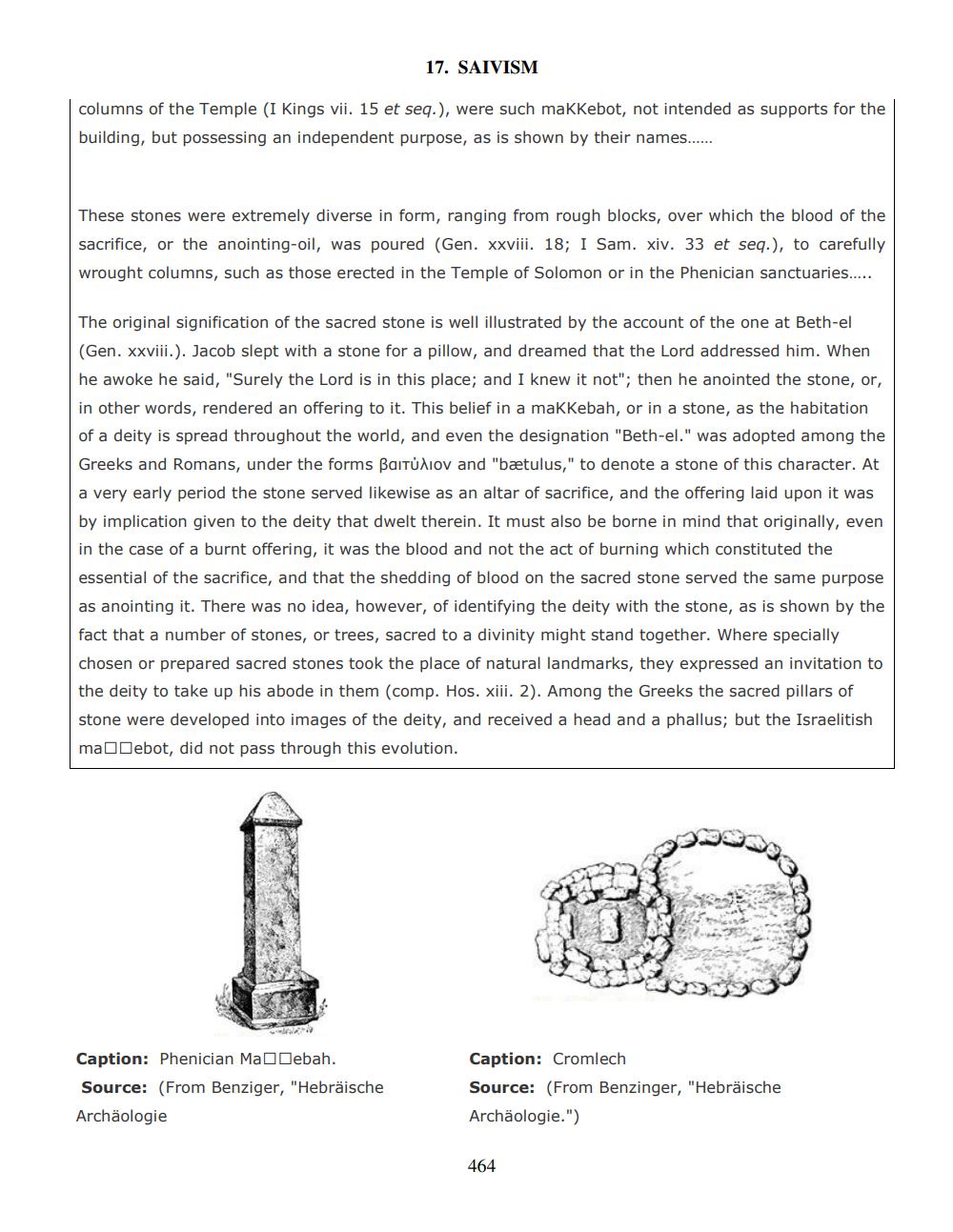________________
17. SAIVISM
columns of the Temple (I Kings vii. 15 et seq.), were such makkebot, not intended as supports for the building, but possessing an independent purpose, as is shown by their names.....
These stones were extremely diverse in form, ranging from rough blocks, over which the blood of the sacrifice, or the anointing-oil, was poured (Gen. xxviii. 18; I Sam. xiv. 33 et seq.), to carefully wrought columns, such as those erected in the Temple of Solomon or in the Phenician sanctuaries....
The original signification of the sacred stone is well illustrated by the account of the one at Beth-el (Gen. xxviii.). Jacob slept with a stone for a pillow, and dreamed that the Lord addressed him. When he awoke he said, "Surely the Lord is in this place; and I knew it not"; then he anointed the stone, or, in other words, rendered an offering to it. This belief in a makKebah, or in a stone, as the habitation of a deity is spread throughout the world, and even the designation "Beth-el." was adopted among the Greeks and Romans, under the forms Baitulov and "bætulus," to denote a stone of this character. At a very early period the stone served likewise as an altar of sacrifice, and the offering laid upon it was by implication given to the deity that dwelt therein. It must also be borne in mind that originally, even in the case of a burnt offering, it was the blood and not the act of burning which constituted the essential of the sacrifice, and that the shedding of blood on the sacred stone served the same purpose as anointing it. There was no idea, however, of identifying the deity with the stone, as is shown by the fact that a number of stones, or trees, sacred to a divinity might stand together. Where specially chosen or prepared sacred stones took the place of natural landmarks, they expressed an invitation to the deity to take up his abode in them (comp. Hos. xiii. 2). Among the Greeks the sacred pillars of stone were developed into images of the deity, and received a head and a phallus; but the Israelitish ma Debot, did not pass through this evolution.
Caption: Phenician Mallebah.
Source: (From Benziger, "Hebräische Archäologie
Caption: Cromlech Source: (From Benzinger, "Hebräische Archäologie.")
464




